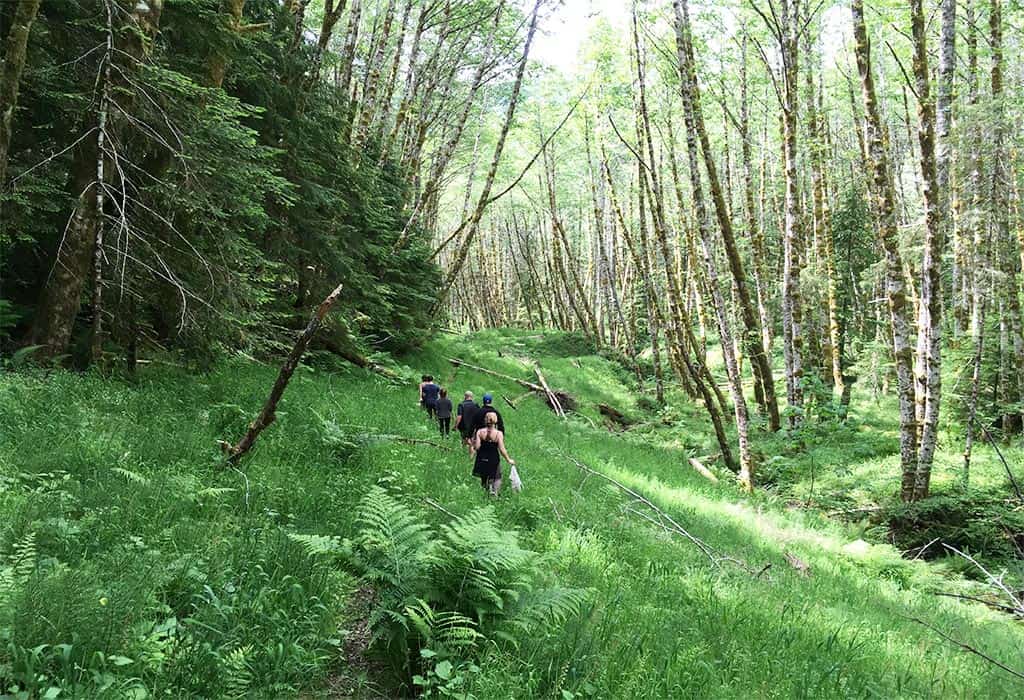
Here’s a press release about inclusion of the Forest Service Legacy Roads and Trails Remediation Program in the Bipartisan Infrastructure Investment and Jobs Act, which passed both the House and Senate and now awaits President Biden’s signature. The legislation permanently authorizes the Forest Service Legacy Roads and Trails Remediation Program and provides $250 million in funding for five years. – mk
WASHINGTON, D.C.—With the passage of the Bipartisan Infrastructure Investment and Jobs Act, soon to be signed into law by President Biden, national forest roads and trails will finally get much needed attention. The legislation permanently authorizes the Forest Service Legacy Roads and Trails Remediation Program and provides vital funding.
Recognizing the need to protect and restore national forest lands and waters so they are more resilient to impacts from climate change, the Legacy Roads and Trails program addresses the impacts from the Forest Service’s immense and failing infrastructure.
The U.S. Forest Service manages twice as many road miles as the national highway system with only a small fraction of the budget. More than 370,000 miles of roads—many built half a century ago during the logging boom—require over $3.2 billion in unfulfilled maintenance needs. Hundreds of thousands of culverts, more than 13,000 bridges, and 159,000 miles of trails are all components of the agency’s dilapidated infrastructure that keep road engineers awake at night with worry.
The implications of decaying infrastructure are severe. Crumbling roads bleed sediment into rivers, creeks, and wetlands, endangering fish and other aquatic wildlife. Failing and undersized culverts block fish—like threatened Chinook salmon and bull trout—from migrating to spawning grounds or reaching cold water refugia. Habitat sliced into small pieces by roads harms wildlife like grizzly bear and elk. As roads close due to storm damage and safety concerns, more people lose recreational access on public lands.
“One obvious key to climate change resiliency is to mend what ails national forests and that is driven by roads,” said Marlies Wierenga of WildEarth Guardians. “Shedding the costly excess of logging roads built over a half a century ago and putting people to work fixing the roads and trails we do need is a common-sense solution for wildlife, fish, clean water, and communities.”
The Legacy Roads and Trails program—established in 2008 and subsequently defunded in 2018—proved to be an effective, no-waste program with demonstrated results. With the passing of this legislation, this program can once again support projects such as fixing roads and trails to withstand more intense storms, decommissioning obsolete roads, and removing or improving culverts under roads to allow fish passage. The program has a proven track record of saving taxpayer money, improving habitat, creating jobs, and guaranteeing safer access for all.
“The Forest Service has a responsibility to protect clean water for the 3,400 communities that rely on national forests as drinking water sources. This program gives the Forest Service a real tool to meet this responsibility and we are grateful for its inclusion in the legislation,” added Wierenga.
“We are thrilled to have this authorization and investment in the Forest Service’s Legacy Roads and Trails Program,” said Thomas O’Keefe of American Whitewater. “For too long the transportation infrastructure on national forests has been neglected with crumbling roads limiting access for recreation and impacting water quality in streams. This program is especially important for climate resiliency and will improve river health while also ensuring access to public lands for all to enjoy.”
“Regular road maintenance improves access to the public lands and trails we love, and funding for trail maintenance keeps paths safer and more sustainable,” said Andrea Imler, Washington Trails Association. “The Legacy Roads and Trails program has proven it works. It reduces the backlog facing public lands and helps ensure trails are well maintained for the next generation of hikers. A future where trails are more accessible to everyone is closer to reality because of programs like Legacy Roads and Trails.”
“This program provides a model of achieving multiple benefits with a few targeted actions,” said Tom Uniack of Washington Wild. “Strategically focusing on road impacts leads to reconnected habitat for migrating wildlife and fish, protected clean water for communities, safer access in a changing climate while saving taxpayer dollars over the long run.”
“It’s a great day for fish and wildlife,” said Dave Werntz of Conservation Northwest, “and the skilled local workforce that will now remove obsolete roads and restore habitat across the country’s public lands.”